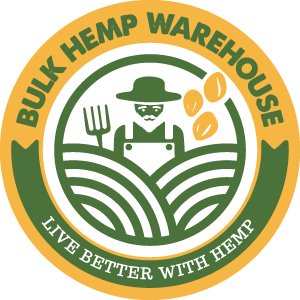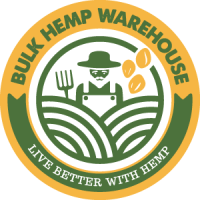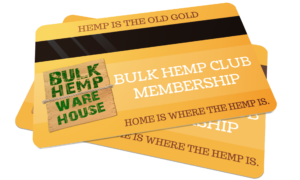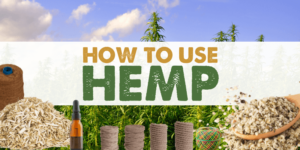
The #1 Complete Guide to Hemp Fabric Benefits & Uses
- Author Bulk Hemp Warehouse
- Categories: Hemp Benefits, Hemp Fabric, Hemp Uses

Table of Contents

What is Hemp Fabric?
There are woven hemp fiber products and non-woven hemp fiber products; hemp fabric is considered a woven hemp product.
A non-woven hemp fiber product would be something like hemp batting (or matting) for insulation, composites or hemp plastic type products.
There are two types of hemp fabrics which are referred to as woven hemp fabrics and knit hemp fabrics.
The difference is pretty obvious once you understand how each one feels and looks, and after we give you a few examples.
For a full explanation, including a chart, here’s a great resources to really help you understand the difference between woven and knit fabrics in general.
What is a Woven Hemp Fabric?
What is a Knit Hemp Fabric?
How is Hemp Fabric Made?
If you want a detailed explanation of how hemp fabrics are manufactured, check out one of our other articles on why Hemp Fabrics are not manufactured commercially in the USA yet.
Why hemp fabric is the material of life?
This makes it a great choice for sustainable fashion and upholstery applications.
Hemp fabric is also anti-static and UV protective, so it helps keep your charge and protect you from harmful sun rays.
When a product doesn’t require toxic herbicides, pesticides, fungicides, larvicides and poisonous glyphosate in order to be grown, it’s automatically going to be a healthier choice.
Hemp fabric is a type of fabric that is made from the hemp plant. Hemp fabric is very strong and durable, and it is also resistant to mold and mildew.
The other big reason why hemp fabric is the fabric of life is that it can provide clean, healthy careers for many.
Because there is so much involved in planting, growing, harvesting and processing hemp for fabrics, it has the ability to provide many types of work for people that want to be a part of something they believe in and can feel really good about at night when falling asleep.
How to care for hemp fabric
However, like all fabrics, it needs to be taken care of properly in order to maintain its quality.
For a more complete overview on hemp fabric care check out our other resources here.
Each type of hemp fabric is unique, and depending on it’s type of weave and composition, whether 100% vs hemp and organic cotton or something else it may be cared for differently.
Here are a few tips on how to care for hemp fabric:
- Avoid washing hemp fabric too often. Washing it too frequently will cause the fabric to break down and will shorten its lifespan.
- When washing hemp fabric, use a mild detergent and cool water.
- Hang hemp fabric to dry or lay it flat to air dry. Avoid using a clothes dryer, as this can damage the fabric.
- Iron hemp fabric on a low setting if necessary.
- Store hemp fabric in a cool, dark dry place.
- Wash your hemp clothing in cold water, on a delicate cycle. If your garment is extremely dirty, you can pre-treat the areas with a stain remover before washing.
- Hang your hemp garments to dry, or dry them on a low setting. Avoid excessive heat, as this can damage the fabric.
- Iron your hemp clothes on a low setting if necessary.
- If you need to remove a stain from hemp fabric, you can try blotting it with a damp cloth or using a gentle stain remover. Be sure to test the stain remover on a small area of the fabric first to ensure it doesn’t damage the material.

What’s The history of hemp fabric?
Hemp’s history is goes back almost to the cradle of civilization.
Hemp fabric was also found in ancient tombs in China and Egypt.
It was used for many different purposes throughout history, including sails, clothing, and paper.
Twisted Hemp Fibers have been used for centuries to make clothing, rope, twine and other textiles.
The plant is believed to have originated in Central Asia and was introduced to China and other parts of Asia by early humans
In the United States, hemp was used to make sails and rope for ships. During the American Civil War, hemp was used to make cloth and rope.
Today, hemp is used to make a variety of products, including clothing, paper, and rope.
For a deeper dive into the history of hemp fabrics check out this article here.

The many uses & benefits of hemp fabric
Hemp is an environmentally friendly material that is also durable and long lasting.
Hemp fabric is also absorbent, so it can be used to make towels, robes and other things that need to be absorbent.
To learn more about hemp’s properties, history and benefits visit this resource here.
Where to buy Hemp Fabrics
Hemp fabrics can be found at a few different types of stores, both online and offline.
However, not all stores will sell hemp fabrics, so it is important to do some research before making a purchase. Some offline stores that sell hemp fabrics include fabric stores, craft stores, and very few if any department stores.
Online, hemp fabrics can be found at many different websites, including some online retailers and upholstery and specialty sites.
To find the best selection and prices for hemp fabrics, it is often best to shop around and compare different stores.
Hemp fabrics are becoming more popular, so there are many places to find them.
With a little research, it should be easy to find the perfect place to buy hemp fabrics.
One important thing to look for when buying hemp fabric is to ask if it is true, genuine, authentic hemp. Not viscose hemp or some other fabric simply being called hemp.
Other Common Questions About Hemp Fabrics
Due to the high price for 100% hemp fabrics, many people complain about the cost, so what you will find on the market is most often a blend.
The benefit of this is to help keep the cost down, while still being able to benefit from the anti-microbial and strength and durability and eco-friendliness of hemp fibers.
First and foremost, hemp has been proven throughout history to be a strong, durable, eco-friendly fabric.
Obviously, there are benefits to synthetic or petroleum-based fabrics that can beat hemp fabric in different ways… however, it’s at the expense of wars, pillaging and plundering our environment to acquire the raw materials to produce those toxic fabrics.
Hemp is indeed more expensive than many other types of fabric, but the more people use them the more we can drive the pricing down.
Hemp Fabric doesn’t require toxic herbicides or pesticides to be grown.
It requires nearly half the amount of water as cotton. No trees need to be cut down to produce it. And it’s 100% biodegradable.
Pros:
– Hemp is a sustainable resource
– Hemp fabric is durable
– Hemp fabric is comfortable
– Hemp Fabric is Antimicrobial
Cons:
– Hemp fabric is more expensive than some other fabrics
– Hemp fabric is not as widely available as some other fabrics
The biggest disadvantages of hemp fabric is that it can be a little hard to find the style and weave you’re looking for, it tends to be more expensive than cotton and synthetic fabrics, and it’s biodegradable.
Obviously the biodegradability is a benefit as well, but if you’re using hemp fabric in an environment where you don’t want it breaking down this could become an issue.
In many ways, hemp fabric is better than cotton fabric, but it’s really subjective answer.
Hemp is better as in better for the environment with how much water is required to grow it, and it does not require herbicides and pesticides. Hemp is not genetically modified, and is stronger, more durable and mold and mildew resistant.
Cotton can be softer, more readily available and cheaper. So it really depends on what is important to you when choosing a fabric.
In our opinion hemp IS the best fabric. But this is a subjective opinion based on our 18 years + of experience working with hemp fabrics. So if you’re asking if hemp is the best fabric, when it comes to the environmental benefits I would say yes. When it comes to the price and availability that’s where it may differ among other options like cotton, ramie, jute or other natural fibers.
After more than eighty years of prohibition, and the demonization of the hemp plant it’s no wonder why so many people lost touch with the reality of hemp fabric’s benefits and value.
It used to be the most popular fabric used among many different cultures as you have learned about in this article above.
Now that hemp is becoming legal in many different parts of the world, more and more people are becoming privy to the benefits and uses for hemp fabrics.
So although it’s not very popular now, it will certainly become more accepted and requested as the regulations fall around the use of hemp fibers for fabrics and other woven applications.
Hemp fabric is in fact used for many types of clothing, but some of the reasons why people avoid using hemp fabric for clothing is because it can be costly, or not provide the look and feel they are going for.
For example with hemp linen it can tend to wrinkle easily, so that’s why many designers will go for a synthetic option.
But to be clear, there are many types of clothing made from hemp fabric.
Depending on what type of hemp fabric, and if it’s been preshrunk it may or may not shrink when washing it or putting it in the dryer.
Knit fabrics tend to shrink more such as t-shirts or hoodies, whereas woven fabrics don’t seem to shrink as much when put in the dryer. So like blazers or dress pants that use a hemp linen, canvas or muslin won’t shrink as much.
There are several reasons why hemp fabrics and hemp clothing are more expensive that other fabrics and clothing made from cotton or synthetic fibers.
Hemp clothing and fabrics tend to be more expensive due to the very small amount that is being produced around the world.
In other words, when you have mass production of a particular product you have what’s called economies of scale.
So because very few farmers are growing hemp, and very few manufacturers and processors are turning the raw hemp fibers into fabrics, and the distance that the fabrics have to travel is what drives the prices up.
Also, with the cost of freight going up nearly every week and the massive tariffs imposed on imported goods all these things drive the cost higher for the end user.
Our hope is that as we help develop the hemp fabric industry within the USA we will be able to benefit from the economies of scale, but this is not likely to happen for another 5-10 years.
Just like any natural fiber fabric hemp can get wet, but it’s not a good idea to have it exposed to ongoing moisture or dampness.
Long periods of exposure to water or moisture can cause the natural fibers to develop mold or mildew and begin to deteriorate over time.
That said, if you have a hemp tarp or a hemp tent or a hemp shower curtain for example, as long as it gets completely dried out between each use it will last a very long time and do just fine being exposed to water or moisture.
Depending on the style of clothing and the hemp fabric being used for the garment you may or may not need to iron it.
Some examples of hemp clothing that doesn’t need to be ironed would be most knit fabric type clothing such as: t-shitrs, hoodies, tank tops, or anything that uses a jersey knit fabric.
On the other hand, if you’re wearing anything made from a hemp canvas, or hemp linen or any woven hemp fabric then you may want to have your vests, blazers, dresses, or dress shirts pressed or ironed to have them nice and smooth.
We are on a mission to align with creative people and companies, that care about making this world a healthier, happier more abundant place to live.
We believe that by providing high quality, hemp fabrics and fibers we can help make your visions and dreams come to fruition, while honoring and respecting our environment.
If you have any questions about what hemp fabric you might need for your project or new product, we would be delighted to work with you and answer any questions you might have.
If you’re looking for a place to get started you might want to order our hemp fabric swatch books on this page here.
Explore Other Posts by Bulk Hemp Warehouse

The Best Hemp Soil Amendments for Premium Organic Farming Made from Hemp
The Best Hemp Soil Amendments for Premium Organic Farming Made from Hemp Did you know that there are four different hemp-based products that organic gardeners and farmers can use as a hemp soil amendment? When most people go online searching
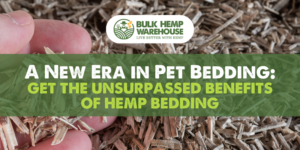
A New Era in Pet Bedding: Get the Unsurpassed Benefits of Hemp Bedding
Curious about the benefits of hemp bedding? Ever thought that your pet’s bedding might not be the best for them? With people caring more about what they buy, finding the perfect bedding becomes crucial. Hemp bedding is here to
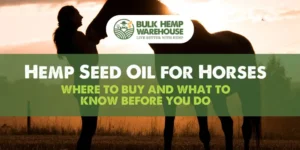
Hemp Seed Oil for Horses: Where to Buy and What to Know Before You Do
Did you know over 60% of U.S. horse owners think about using hemp oil? This shows that more and more people are looking at natural supplements for their horses. Hemp seed oil comes from hemp seeds and is full of









